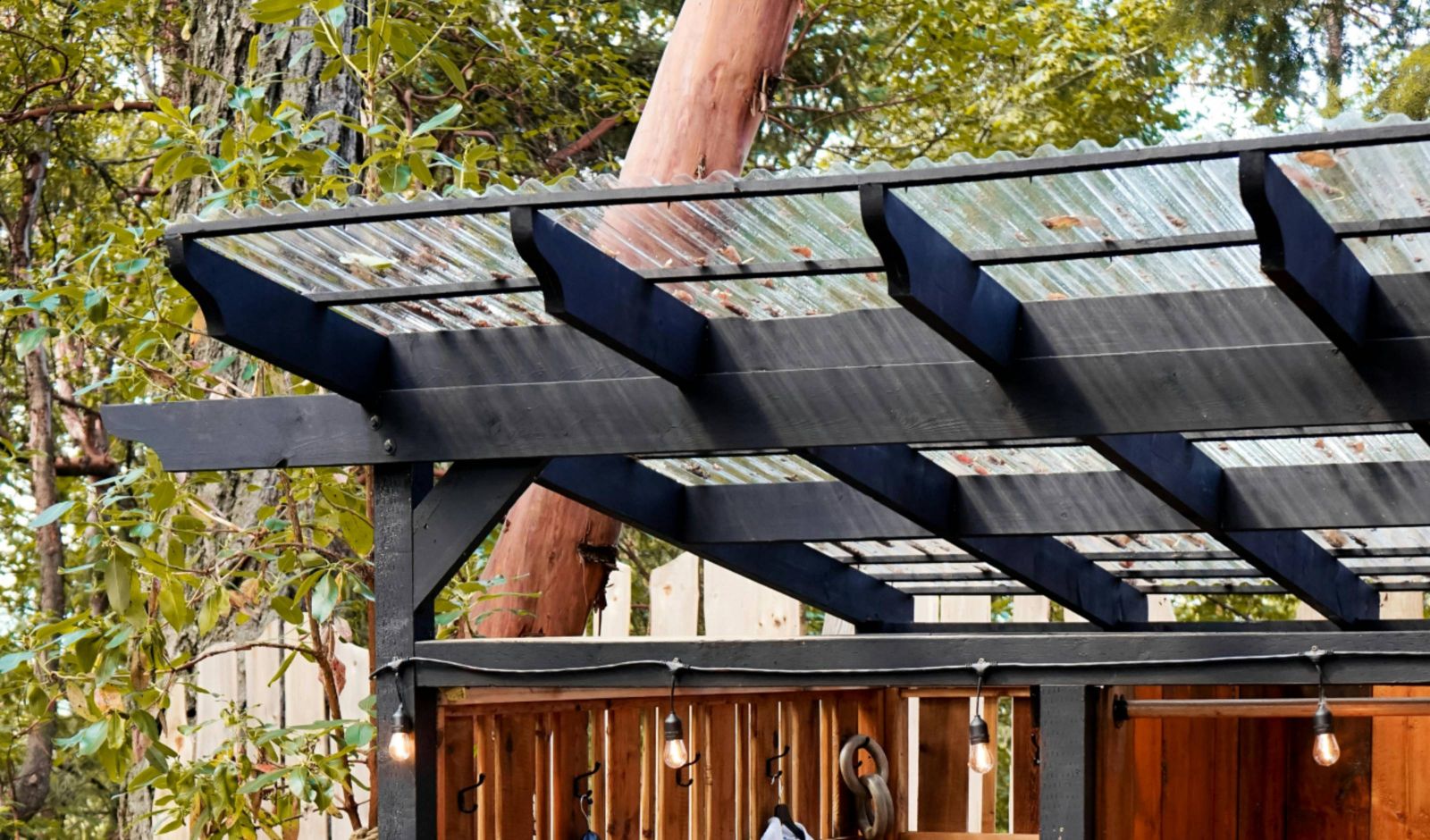
Comment: If you’re building or renovating and want to use sustainable materials, how do you know which ones to choose? What do you need to consider when evaluating a product’s sustainability? And how do you know something is truly a better option for the environment and your health?
Unfortunately, it’s no easy task. Even products that may seem relatively benign—at least at first glance—can come with a range of problems. Polycarbonate is one striking example of a problem material. While it’s commonly used in construction, especially for transparent roofing, the downsides of polycarbonate are seldom discussed.
When polycarbonate was developed in 1957, it was celebrated as “strong enough to replace steel and clear enough to replace glass”. The plastic has since been widely used for eyeglasses, shatterproof windows, and for transparent coverings on buildings—think pergolas and light-weight roofs on outdoor structures.
What you might not know is that polycarbonate is a polymer of bisphenol A (BPA), a chemical that’s sparked controversy over its use in food packaging. Last year, the European Commission adopted a ban on BPA in food contact materials. Growing awareness of the potential health effects of BPA has also led to a rise in consumer products being labelled "BPA-free".
The problem with BPA
Since the 1930s, there have been concerns about BPA’s safety. However, it’s only in the past 25 years that these concerns have been discussed more widely.
BPA is known to be corrosive, an irritant, and a human health and environmental hazard. The European Environment Agency notes BPA is associated with a range of concerns including toxicity to reproduction, skin sensitisation, and endocrine disruption. It also notes BPA may cause serious eye damage, allergic skin reactions, and respiratory irritation.
The chemical is also toxic to aquatic life with long-lasting effects.
The adverse effects of BPA are due to its similarity to the building blocks of reproduction. In fact, in the 1930s BPA was explored as a possible drug due to its oestrogenic properties. This history is not always well understood when specifying BPA polymers in building materials.
To date, much of the research on BPA’s effects has focused on materials that come into contact with food and drink, such as water cooler bottles, eating utensils, and baby bottles. This research has shown BPA’s potential to leach from polycarbonate.
It’s hard to find conclusive research on how much BPA leaches from polycarbonate when it’s used as a roofing material. But it stands to reason that normal exposure to rain and sun would contribute to degradation of polycarbonate and hence leaching of BPA.
This more-than-likely scenario begs the questions:
- Should rainwater from polycarbonate roofs, which would inadvertently collect at least some BPA, be harvested for human consumption?
- Should rainwater from polycarbonate roofs be released into existing natural water systems, given BPA is known to be toxic to aquatic ecosystems?
- How much harm can occur from the manufacture of BPA, through occupational and accidental exposures of workers to BPA, and its release into the environment?
Alternatives to polycarbonate
Despite growing recognition that BPA is problematic, polycarbonate production has increased. In recent years, global supply has exceeded four million tonnes per year. With the decrease in use of BPA in food-related applications, construction applications make up an increasingly significant share of this supply.
The construction industry and associated professions, such as architecture, need to be part of finding alternatives.
In the short term, acrylic sheeting may be one option for roofing. It has very similar properties to polycarbonate—in terms of strength and transparency (or colour)—and some might remember well-known brands of acrylic, Perspex and Plexiglass, were commonly used before polycarbonate flooded the market. As with all plastics, acrylic has some problem substances in its manufacture but, overall, it is a significantly less harmful plastic than polycarbonate. Not good—just a less bad alternative until better options are developed.
Polyvinylchloride (PVC) could also be an alternative to polycarbonate. However, there is a substantial body of evidence about its downsides, both from a health and environmental perspective. The red list of the International Living Future Institute’s Living Building Challenge cites both PVC and BPA as materials to be avoided.
Research is showing many other commonly used materials present problems. Polycarbonate is just one example discussed in a 2024 book that I co-edited, which brings together existing research on the sustainability and toxicity of building materials. It’s clear we need more pathways to disseminate knowledge about these materials and which ones are more or less problematic. This information needs to be easily available to those specifying materials used in our homes—as well as to homeowners making decisions about the products they want to use.
This article was originally published on Newsroom.
Emina Kristina Petrović is a senior lecturer in Sustainability in Design at Te Herenga Waka—Victoria University of Wellington.
